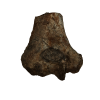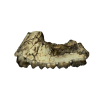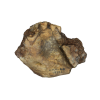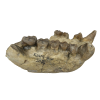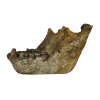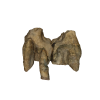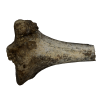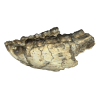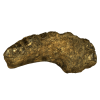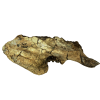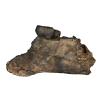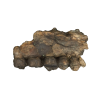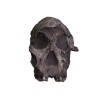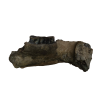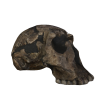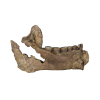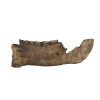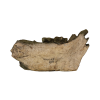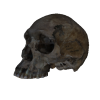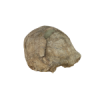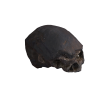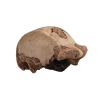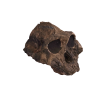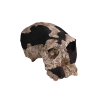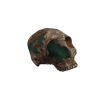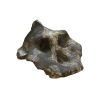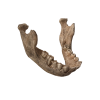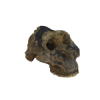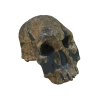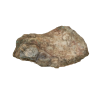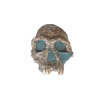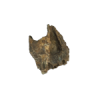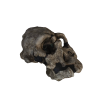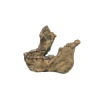Having worked at Lothagam for the previous five years and finding plenty of fossils but almost no hominid specimens, the team had almost lost heart. So the move to Kanapoi to embark on a new phase of field exploration, in the 4 million year old deposits there, was a welcome change of location. The excitement soon returned when Wambua Mangao found the first half of the upper jaw of an Australopithecus anamensis individual, dated at 4.16 million years. The other half of the upper jaw turned up in the subsequent excavation. This find marked the beginning of the flow of discoveries of hominins at Kanapoi and was a memorable time for all of the team. Kanapoi is an area of undulating hills covered in basalt pebbles that cover the sedimentary deposits. The pebbles make it extremely difficult to spot any fossils on the surface.
This maxilla shows some primitive features such as the very parallel tooth rows, which are found in apes. However the tibia (bone of the lower leg) of this same species from a different individual, indicates that this species was indeed bipedal and therefore is classified as a hominin.



